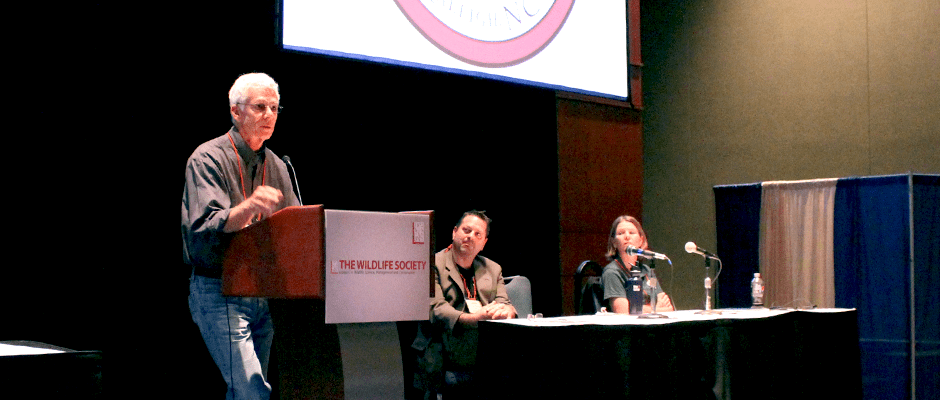Share this article
Professionals help students open doors of opportunity
While students might have an idea of what their dream position is in the wildlife field, they may need a little extra help getting to that position.
This was the purpose of the “Opening the Door to Your Dream Career” panel discussion Wednesday morning at TWS’ 23rd Annual Conference in Raleigh, North Carolina. Panelists Jim Nichols, a senior scientist emeritus at the Patuxent Wildlife Center, Larissa Bailey, an associate professor at Colorado State University, and Jason Cryan, the director and chief of research and collections at the North Carolina Museum of Natural Sciences provided advice on constructing resumes and cover letters, as well as how to impress potential employers during an interview and how to develops a strong, professional social media presence.
Nichols explained that the work people do in the wildlife field should be work that is scientifically interesting, useful and doable. He says even if people are following what a funder asks him or her to do, they should still find a way to “twist it into something fairly useful.” Nichols also says it’s important for students who are applying to positions to demonstrate their ability to be part of a team.
Bailey provided more specific advice regarding resumes and cover letters. “You need to tailor your cover letter and resume specific to the job, she said. “Do your homework and include that information in a cover letter and highlight key experience in your resume that applies to that job.”
Bailey also suggests showing enthusiasm in cover letters and in interviews. She says even if you apply to positions that are above your experience level, enthusiasm can get you pretty far.
Cryan’s position at the North Carolina Museum of Natural Sciences might be something that students looking for positions in the field might not be familiar with. “It’s great to have an ideal position to know what you’re aiming for,” Cryan said. But, he adds, you shouldn’t turn down opportunities and close doors just because they were not originally part of your plan.” As for particular advice for writing cover letters, Cryan says make sure they are clear, concise, coherent and factual. Further, he says job seekers should clearly articulate their vision statement in the cover letter.
After a session where students asked the panel members questions such as how to make sure their resumes are not immediately discarded by employers, Roland Kays, the head of the biodiversity research lab at the North Carolina Museum of Natural Sciences, provided some insight into how to use social media to your advantage in the field.
Kays says that in 2000, the only ways to distribute research and information to a broader audience was through giving talks, writing articles in magazines and newspapers and perhaps publishing a press release. But today, people spending a large chunk of their time viewing screens, making how you can distribute information much easier. He stresses the importance of using Twitter, Facebook, Instagram and blogging in order to make people aware of what scientists are doing.








